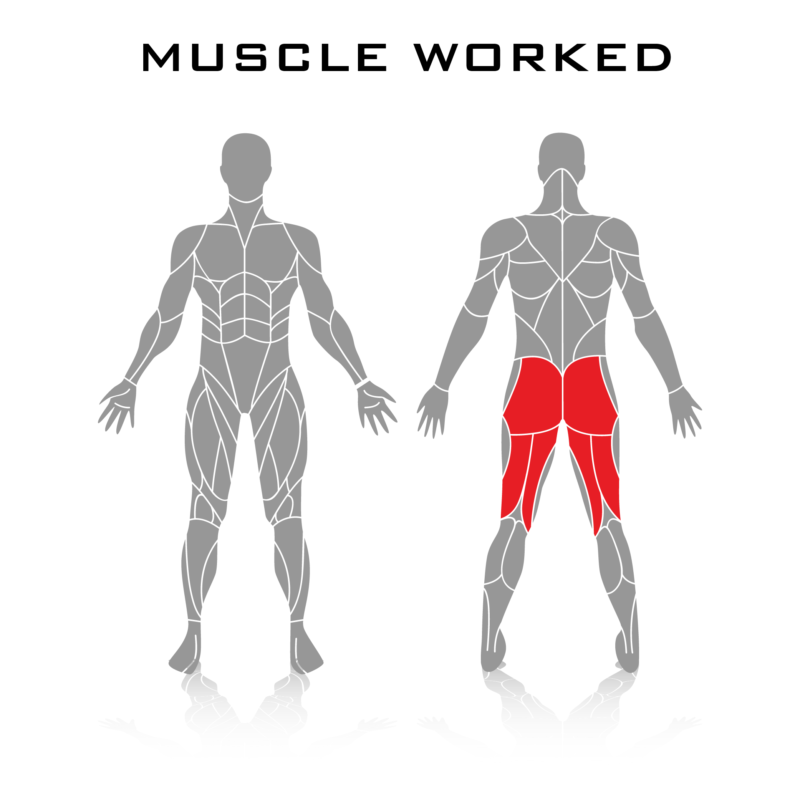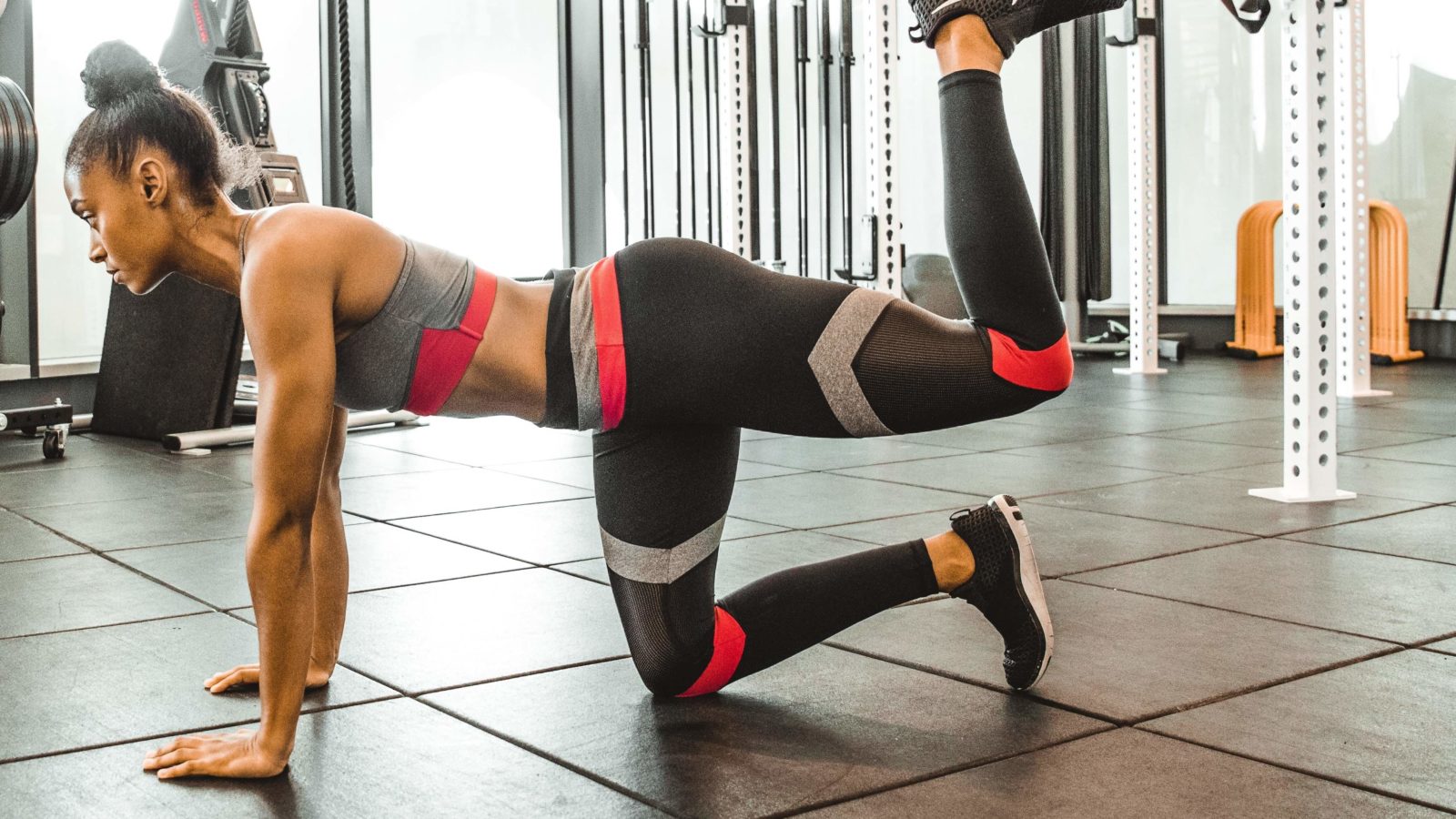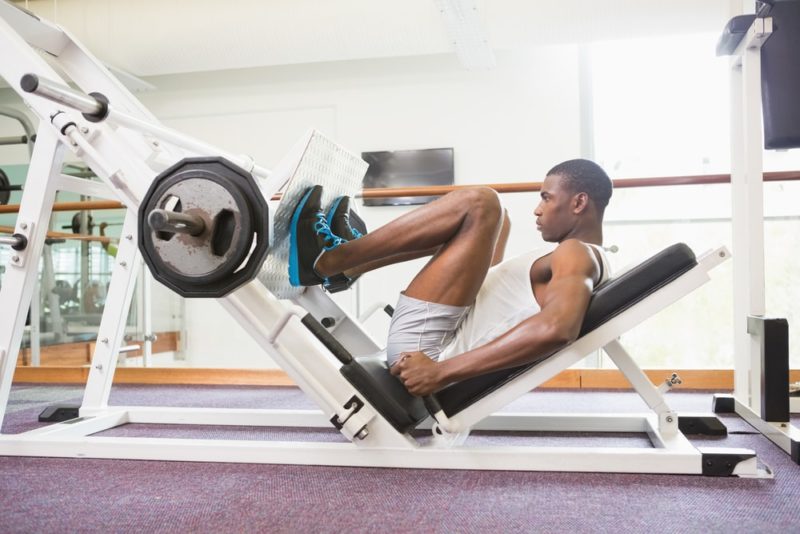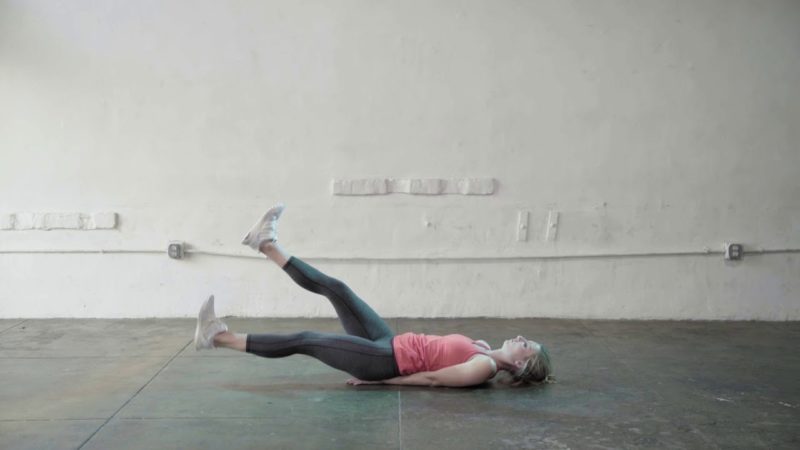Diving Deep: The Importance of Hip Extension Exercises
Hip extensions are a pivotal exercise that many often overlook, despite their integral role in daily movements, sports conditioning, and injury prevention. Primarily, they work your glutes, especially the gluteus maximus, helping you in daily movement. Whether you’re an athlete seeking enhanced performance or someone aiming for toned, strong muscles, understanding and mastering hip extension exercises can be a game-changer for your fitness journey.
Muscles Worked | Benefits | How To Do Quadruped Hip Extensions | Variations | Conclusion | FAQs
Muscles Worked
Understanding hip extension requires diving deep into the primary muscles that facilitate this vital movement. Here’s a breakdown:

Gluteus Maximus: The Prime Mover of Hip Extension
The gluteus maximus stands out as the powerhouse behind hip extension exercises. It’s the largest and most robust muscle in our lower body, shaping the rounded contour of our buttocks. Not only does this muscle connect the tailbone to the thigh bone, but it also plays a pivotal role in our daily actions, such as standing, walking, sitting, and squatting. When you wonder about the primary force behind the extension of hips, the gluteus maximus takes center stage.
Hamstrings: The Supporting Stars
Comprising the semitendinosus, semimembranosus, and biceps femoris, the hamstrings are situated at the back of our thighs. These muscles stretch from the pelvis to the back of our knees, ensuring our hip joints remain stable. Their dual role is evident in both hip and knee movements. For the knee, they aid in bending, while for the hip, they team up with the gluteus maximus to facilitate a backward quad motion.
Adductor Magnus (Posterior Head)
While it might be lesser-known, the posterior head of the adductor magnus, nestled on the inner side of our thighs, is essential for hip extensions. This muscle lends its support to hip extension, working in tandem with the gluteus maximus and hamstrings.
Benefits of Hip Extension Exercises
Despite the integral role hip extensors play in our daily movements, hip extension exercises often fly under the radar in many workout routines. Delving into the advantages of these exercises emphasizes upon just how crucial they are, not only for athletes but for everyone.
Elevating Sports Performance
The prime mover of hip extension is the gluteus maximus, working in tandem with the hamstrings. These powerhouses are not just muscles; they are the engines behind an athlete’s explosive power and agility. By incorporating hip extension exercises, athletes can experience:
- Performance Boost: Targeting the gluteus maximus and hamstrings amplifies athletic prowess, especially in sports demanding rapid lower body movements.
- Injury Minimization: Stronger hip extensor muscles mean reduced vulnerability to injuries
- Enhanced Flexibility: Regular hip extension workouts make the muscles more pliable, fostering greater flexibility
- Impact on Running and Swimming: The dynamics of hip extensions and flexions come to play prominently in activities like running and swimming. They facilitate the continuous, rapid quad movements powered by both flexors and extensors.
Achieving Body Balance
Balance is the body’s art of maintaining equilibrium, and both hip extension and flexion exercises contribute to this. While many are familiar with hip flexion, especially as they’re integral to several ab workouts, the extension of hip movements, which involve the backward motion of thighs, often get sidelined. Prioritizing both ensures:
- Stability: A balanced workout routine targeting both flexors and extensors ensures better postural stability.
- Injury Prevention: A balanced musculature reduces the risk of overcompensation and subsequent injuries.
Warding Off Injuries
A sedentary lifestyle often leads to weaker gluteus maximus and hamstrings. This inactivity not only causes muscle tightness and weakness but also puts undue strain on the lower back. Over time, this can result in spinal injuries. By integrating hip extension exercises into daily routines, individuals can:
- Combat Muscle Weakness: Regular workouts targeting the hip extension muscles can reverse the effects of prolonged sitting or inactivity.
- Spinal Protection: Strengthening the hip extensors ensures that the lower back doesn’t bear the brunt of daily activities, reducing the risk of spinal injuries.
Sculpting and Toning
Who doesn’t want toned muscles? Hip extension exercises are your ticket to a well-sculpted lower body. Regularly working out the gluteus maximus and hamstrings promises:
- Defined Musculature: Achieve that chiseled look on your glutes and quads.
- Fat Reduction: Consistent workouts can expedite fat loss, showcasing more defined leg muscles.
- Strength Boost: Beyond aesthetics, stronger muscles translate to improved functional strength in daily tasks.
How to Do Quadruped Hip Extension Correctly
Among the myriad of movements that target the hip flexors, one stands out for its effectiveness and widespread recommendation: the Quadruped Hip Extension. Not only has this exercise gained popularity in the fitness community, but the American Council of Exercise has also highlighted its efficacy.
Their studies pinpoint the Quadruped Hip Extension as the top exercise to simultaneously activate the gluteus maximus (often termed as the prime mover of hip extension) and the hamstrings.
Commonly known as “donkey kicks” or “leg raises”, this exercise is a staple in hip extension exercises for those looking to target the posterior chain.
Below is a step-by-step guide to ensure you reap the full benefits while maintaining proper form.
Step-by-Step Instructions
- Defined Musculature: Achieve that chiseled look on your glutes and quads.
- Fat Reduction: Consistent workouts can expedite fat loss, showcasing more defined leg muscles.
- Strength Boost: Beyond aesthetics, stronger muscles translate to improved functional strength in daily tasks.
- Starting Position: Begin by placing your hands and knees on the ground. Ensure your back remains neutral and your abdominal muscles are engaged, laying the foundation for the extension of hips.
- The Lift: Extend one leg backwards and upwards, maintaining a 90-degree angle throughout this motion. As you do this, imagine your foot trying to touch the ceiling.
- Alignment Check: Throughout the movement, ensure your hip, thigh, and knee stay aligned and parallel to the ground. It’s crucial that the movement is driven by the hip and not by an arching back.
- Returning: Gently bring the leg back to its starting position. In this way, you’ve completed one rep.
Reps and Sets
For those new to this hip extension exercise, it’s best to start with 8 reps with 3 sets during your leg-focused workout days. As you gain strength and familiarity over 3-4 sessions, you can increase the number of reps or introducing additional resistance.
Tips
Maintain a straight back: Arching can compromise the effectiveness and increase injury risk.
Keep your gaze downwards: This ensures your neck is aligned with your spine.
Boost the Challenge: To further intensify the exercise, introduce ankle weights or place a light dumbbell behind the knees.
Hip Extension Exercise Variations
While there’s a myriad of hip extension exercises available for fitness enthusiasts, single leg hip extension workouts stand out due to their targeted impact. These exercises place concentrated effort on the hip extension muscles, making them particularly effective for strengthening and toning.
Let’s delve into some of these variations:
Pilates Swimming: Merging Yoga and Hip Extensions
For those who’ve embraced Yoga or Pilates, the ‘Pilates Swimming’ will feel like a familiar dance. Not only does it blend seamlessly with such body movements, it also provides an intense workout for the extension of hips.
How to Do It
- Lie face-down on a mat, extending your arms and legs.
- Engage your core and initiate flutter kicks backward, ensuring your legs remain straight and lifted slightly off the ground.
Machine-Assisted Hip Extension: Maximizing Gym Resources
Leveraging the power of gym machinery can optimize the results of hip extension exercises. If you hold a gym membership, the hip extension machine becomes the perfect tool, allowing for weight and position adjustments tailored to your needs.
How to Do It
- Position yourself on the machine as instructed, usually facing down with the leg pad resting on the back of your desired leg.
- Push against the pad, performing the extension of hip, and then slowly return to the starting position.
Standing Hip Extension: Simple Yet Effective
Among all the variations, the standing hip extension is the most straightforward yet delivers profound results. It’s an exercise that speaks to the essence of what is hip extension.
How to Do It
- Stand upright next to a sturdy object like a chair or wall for support.
- Keeping your core engaged, slowly lift one leg backward without bending the knee. Ensure the movement stems from the hip.
- Return to the starting position and repeat.
In essence, while the gluteus maximus is the prime mover of hip extension, incorporating diverse exercises ensures strengthening of all hip extension muscles. Whether you’re a seasoned athlete or just beginning your fitness journey, these variations provide scalable challenges for every level.
Conclusion
Hip extension exercises are vital for a strong and flexible lower body. The gluteus maximus plays a central role, with the hamstrings offering support.
Regularly practicing these exercises can improve athletic performance, prevent injuries, and give muscles a toned appearance.
In short, they’re a valuable addition to any fitness routine.
Frequently Asked Questions
Which muscles extend the hip?
The primary muscles that extend the hip are the gluteus maximus and the hamstrings. Specifically, the gluteus maximus is the prime mover of hip extension. The hamstrings, comprising the semitendinosus, semimembranosus, and biceps femoris, support this function.
How do I strengthen my hip extension?
To strengthen your hip extension, it’s essential to regularly practice hip extension exercises such as Quadruped Hip Extensions, Standing Hip Extensions, and Pilates Swimming. Incorporating these movements into your fitness routine, especially focusing on exercises where the prime mover of hip extension is targeted, will effectively enhance the strength and flexibility of your hip extensors.
Why is hip extension important?
Hip extension is crucial as it powers many daily activities like walking, standing, and running. It enhances athletic performance, provides balance to the body, and helps prevent injuries, especially in the lower back. Proper hip extension also contributes to a stronger and more toned lower body.
Is hip extension concentric or eccentric?
Hip extension involves a concentric contraction when the hip extensor muscles, particularly the gluteus maximus, shorten as the leg moves backward. Conversely, during hip flexion, when the leg returns to its starting position, the hip extensors undergo an eccentric contraction, lengthening while controlling the movement.
What is full hip extension?
Full hip extension is the maximum straightening or opening of the hip joint. It is achieved when your thigh or leg moves backward as far as anatomically possible. It’s a position where the hip extensor muscles, especially the gluteus maximus, are fully engaged and the front of the hip is opened completely.
What are hip raises good for?
Hip raises, also known as bridge exercises, are excellent for strengthening the gluteus maximus, hamstrings, and core muscles. They enhance hip mobility, support lower back health, improve posture, and aid in injury prevention. Additionally, hip raises help you achieve a toned and lifted appearance in the glutes.
What are hip thrust good for?
Hip thrusts are good for targeting and strengthening the gluteus maximus, hamstrings, and core. They help improve athletic performance, enhance hip power and stability, and contribute to better posture. Regularly performing hip thrusts can also lead to more defined and sculpted glutes.
Check out other leg workouts from our workout series.
The primary muscles that extend the hip are the gluteus maximus and the hamstrings. Specifically, the gluteus maximus is the prime mover of hip extension. The hamstrings, comprising the semitendinosus, semimembranosus, and biceps femoris, support this function.
To strengthen your hip extension, it’s essential to regularly practice hip extension exercises such as Quadruped Hip Extensions, Standing Hip Extensions, and Pilates Swimming. Incorporating these movements into your fitness routine, especially focusing on exercises where the prime mover of hip extension is targeted, will effectively enhance the strength and flexibility of your hip extensors.
Hip extension is crucial as it powers many daily activities like walking, standing, and running. It enhances athletic performance, provides balance to the body, and helps prevent injuries, especially in the lower back. Proper hip extension also contributes to a stronger and more toned lower body.
Hip extension involves a concentric contraction when the hip extensor muscles, particularly the gluteus maximus, shorten as the leg moves backward. Conversely, during hip flexion, when the leg returns to its starting position, the hip extensors undergo an eccentric contraction, lengthening while controlling the movement.
Full hip extension is the maximum straightening or opening of the hip joint. It is achieved when your thigh or leg moves backward as far as anatomically possible. It’s a position where the hip extensor muscles, especially the gluteus maximus, are fully engaged and the front of the hip is opened completely.
Hip raises, also known as bridge exercises, are excellent for strengthening the gluteus maximus, hamstrings, and core muscles. They enhance hip mobility, support lower back health, improve posture, and aid in injury prevention. Additionally, hip raises help you achieve a toned and lifted appearance in the glutes.
Hip thrusts are good for targeting and strengthening the gluteus maximus, hamstrings, and core. They help improve athletic performance, enhance hip power and stability, and contribute to better posture. Regularly performing hip thrusts can also lead to more defined and sculpted glutes.



